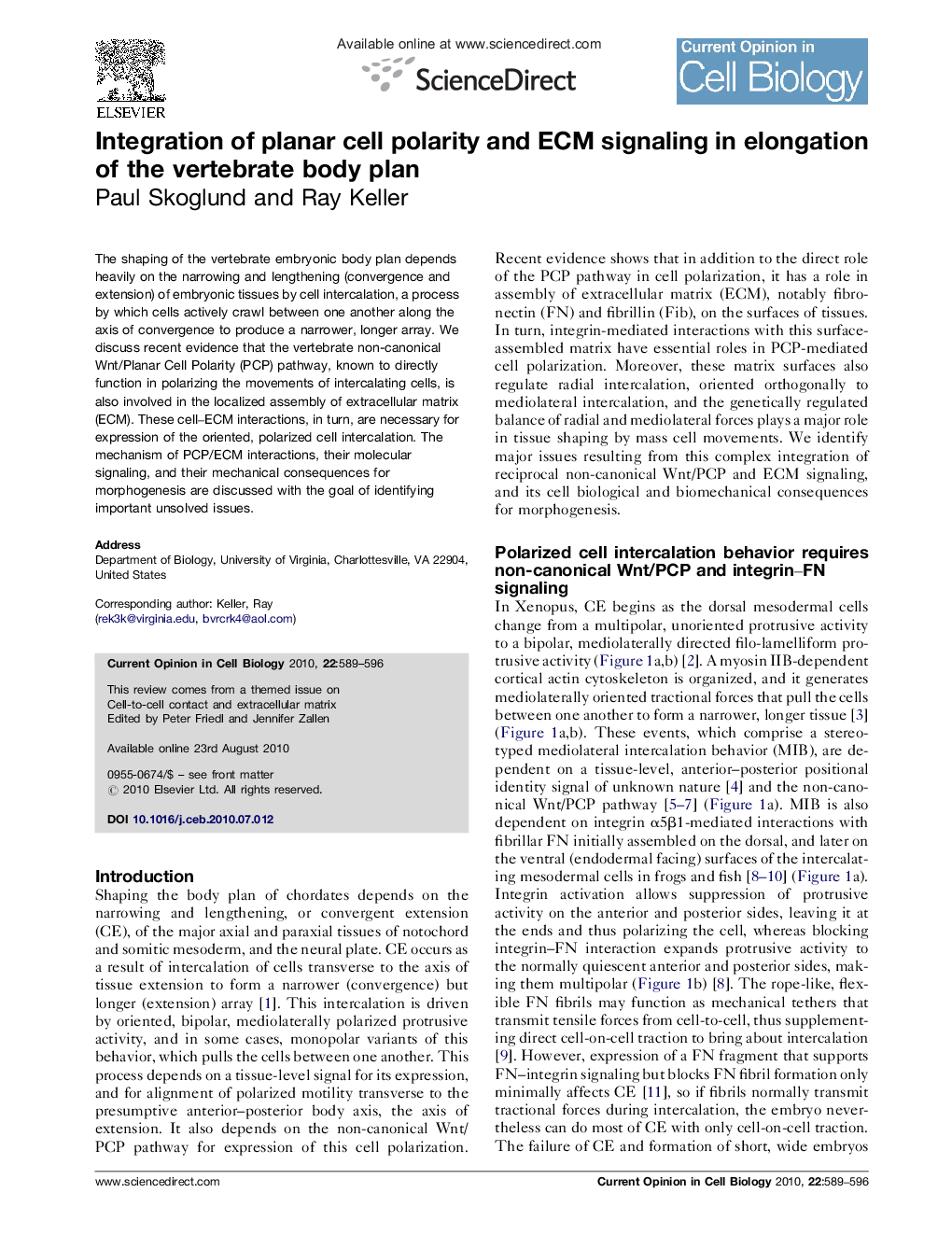| Article ID | Journal | Published Year | Pages | File Type |
|---|---|---|---|---|
| 2169956 | Current Opinion in Cell Biology | 2010 | 8 Pages |
The shaping of the vertebrate embryonic body plan depends heavily on the narrowing and lengthening (convergence and extension) of embryonic tissues by cell intercalation, a process by which cells actively crawl between one another along the axis of convergence to produce a narrower, longer array. We discuss recent evidence that the vertebrate non-canonical Wnt/Planar Cell Polarity (PCP) pathway, known to directly function in polarizing the movements of intercalating cells, is also involved in the localized assembly of extracellular matrix (ECM). These cell–ECM interactions, in turn, are necessary for expression of the oriented, polarized cell intercalation. The mechanism of PCP/ECM interactions, their molecular signaling, and their mechanical consequences for morphogenesis are discussed with the goal of identifying important unsolved issues.
